When it comes to international shipping, sea freight stands out as a preferred method for transporting goods across vast distances, particularly for businesses importing from manufacturing hubs like China. This mode of transportation is not only cost-effective but also capable of accommodating large volumes of cargo, making it ideal for bulk shipments. As global trade continues to flourish, understanding the intricacies of sea freight—from its advantages and shipping processes to key considerations for specific trade routes—becomes essential for businesses looking to optimize their logistics strategies. In this guide, we delve into the benefits of sea freight, key shipping considerations for routes such as China to Indonesia, and the various elements that influence shipping costs and transit times.

Understanding Sea Freight
Sea freight refers to the transportation of goods via ocean vessels. It is one of the most commonly used methods of shipping internationally and is particularly popular for bulk and large shipments. When considering importing goods from China, many businesses opt for sea freight due to its cost-effectiveness and ability to handle significant volumes.
Choosing sea freight can offer several advantages:
-
Cost-Effectiveness: Compared to other shipping methods, such as air freight, sea freight is generally much more economical, especially for large shipments. This is crucial for companies looking to maximize profit margins while minimizing shipping costs.
-
Capacity: Ocean vessels can accommodate a wide variety of cargo types and sizes, making them ideal for transporting everything from heavy machinery to consumer goods.
-
Sustainability: As global awareness of environmental issues rises, sea freight emerges as a more sustainable option. Ships emit significantly less CO2 per ton-mile than trucks or airplanes, making them a greener choice for international shipping.
-
Reduced Risk of Damage: Goods transported by sea are generally less susceptible to damage compared to other methods, due to the more stable environment onboard modern vessels equipped with advanced technology.
Benefits of Sea Freight for Importing Goods
When importing goods, particularly from a manufacturing powerhouse like China, sea freight offers numerous benefits:
| Benefit | Description |
|---|---|
| Lower Shipping Costs | Sea freight typically has lower per-unit costs compared to air freight, making it ideal for bulk shipments. |
| Larger Shipments | The ability to move large quantities of goods at once, which is beneficial for businesses with high demand. |
| Versatility | Sea freight can handle various types of cargo, including hazardous materials, oversized items, and perishables. |
| Reliability | Ocean freight schedules are generally consistent, providing businesses with predictable shipping timelines. |
| Enhanced Security | Containers are sealed and tracked throughout their journey, reducing the chance of theft or loss. |
| Global Reach | Sea freight connects businesses to virtually every country in the world, facilitating international trade. |
These benefits make sea freight an attractive option for businesses looking to import products from countries like China.
Key Considerations for Shipping from China to Indonesia
When planning to ship goods from China to Indonesia, understanding the unique aspects of this trade route is crucial. Here are the key considerations:
Shipping Methods
Several shipping methods are available for transporting goods from China to Indonesia. The most common include:
-
Full Container Load (FCL): Ideal for large shipments, an FCL involves renting an entire container. It is often the most efficient and cost-effective option for large volumes.
-
Less than Container Load (LCL): For smaller shipments, LCL allows multiple shippers to share space in a single container. This is a great option for businesses with less frequent or smaller orders.
-
Breakbulk Shipping: Suitable for oversized cargo that cannot fit into standard containers, breakbulk shipping involves loading individual pieces onto the ship. This method often requires additional handling and documentation.
Shipping Routes
The shipping route from China to Indonesia generally involves the following major ports:
-
Departure Ports in China: The primary departure ports include Shanghai, Ningbo, and Shenzhen. These ports are equipped with vast infrastructure and services, making them efficient departure points.
-
Arrival Ports in Indonesia: Major ports include Tanjung Priok in Jakarta and Surabaya. Tanjung Priok is the largest and busiest port in Indonesia, handling a significant portion of the country’s import traffic.
| Departure Port | Arrival Port | Estimated Transit Time |
|---|---|---|
| Shanghai | Tanjung Priok | 10-14 days |
| Shenzhen | Surabaya | 12-16 days |
| Ningbo | Tanjung Priok | 10-14 days |
Required Documents
To ensure a smooth shipping process from China to Indonesia, it is critical to prepare the necessary documents, including:
- Bill of Lading: A key document that serves as a receipt of shipment and contract between the shipper and carrier.
- Commercial Invoice: A detailed invoice that outlines the transaction, including item descriptions, quantities, and prices.
- Packing List: A document detailing the contents of the shipment, essential for customs clearance.
- Import License: Depending on the type of goods being imported, an import license may be required by Indonesian authorities.
Customs Clearance
Navigating customs clearance can be one of the most complex aspects of shipping. It is crucial to work with a reputable freight forwarder like Dantful International Logistics that understands Indonesian customs regulations. Key steps include:
-
Duties and Taxes: Understanding the applicable import duties and taxes is essential for accurate cost calculations. Customs duties in Indonesia can vary significantly depending on the nature of the goods.
-
Documentation Review: Customs authorities will review all import documentation. Ensuring that all documents are accurate and complete will facilitate faster clearance and minimize delays.
-
Customs Broker: Employing a customs broker can greatly simplify the process, as they can help navigate local regulations and ensure compliance, reducing the risk of penalties or shipment delays.
By considering these factors, businesses can successfully manage their shipping process from China to Indonesia, ensuring efficient and compliant importation of goods. For a seamless experience, consider partnering with Dantful Logistics for professional, cost-effective, and high-quality logistics services tailored to meet your needs.
Dantful International Logistics Services:
- Dantful Ocean Freight Services
- Air Freight From China
- Amazon FBA Freight Forwarding
- WAREHOUSE Services
- One-Stop Customs Clearance Solution
- Cargo Insurance Services in China
- DDP Shipping Services By Dantful Logistics
- Out of Gauge Cargo Transportation Shipping Services
Major Ports for Sea Freight
Top Chinese Ports for Exporting to Indonesia
When exporting goods from China to Indonesia, selecting the right port is critical for optimizing logistics and ensuring efficient transportation. The following are the top Chinese ports known for their significant export activities to Indonesia:
| Port Name | Location | Key Features |
|---|---|---|
| Shanghai | East China | Largest port in the world, excellent infrastructure, significant shipping routes to Southeast Asia. |
| Shenzhen | South China | Major hub for electronics and consumer goods, known for its fast processing times and modern facilities. |
| Ningbo | East China | One of the fastest-growing ports, known for its efficient operations and deep-water capabilities. |
| Guangzhou | South China | Significant port for general cargo, with extensive connections to various Southeast Asian countries. |
| Xiamen | Southeast China | Key port for agricultural and perishable goods, with streamlined customs procedures for exports. |
These ports have established themselves as pivotal points for trade, providing a robust infrastructure and services essential for facilitating sea freight to Indonesia.
Key Indonesian Ports for Imports
Upon arrival in Indonesia, the choice of port will significantly impact the efficiency of the logistics chain. The primary Indonesian ports for imported goods are:
| Port Name | Location | Key Features |
|---|---|---|
| Tanjung Priok | Jakarta | The largest and busiest port in Indonesia, capable of handling large containers and a wide range of cargo types. |
| Surabaya | East Java | A critical port for cargo destined for the eastern regions of Indonesia, featuring strong connectivity. |
| Makassar | South Sulawesi | Key port for trade with eastern Indonesia, it serves as a vital hub for inter-island shipping. |
| Batam | Riau Islands | A free trade zone, crucial for goods being imported for manufacturing and assembly. |
| Dumai | Riau | An important port for oil and gas imports, with capabilities for handling bulk cargo. |
Choosing the appropriate port in Indonesia ensures smooth import processes and effective distribution across the archipelago.
The Sea Freight Shipping Process Step-by-Step
Understanding the sea freight shipping process can help streamline operations and minimize delays. Below is a detailed breakdown of the steps involved:
1. Obtaining a Freight Quote and Booking
-
Providing Shipment Details to the Freight Forwarder: Begin by supplying the freight forwarder with specific information about the shipment, including the type of goods, volume, weight, and preferred shipping dates.
-
Agreeing on Shipping Terms and Rates: The freight forwarder will provide a quote based on the provided details. Key elements include shipping terms (Incoterms) and rates. Ensure clarity on what is included in the service.
-
Confirming the Booking: Once both parties agree on the terms, confirm the booking to secure space on the vessel.
2. Cargo Pick-up and Delivery to the Port
-
Arranging for Cargo Pick-up from the Supplier: Coordinate with the supplier to schedule the cargo pick-up.
-
Transporting the Goods to the Port of Departure in China: The freight forwarder will arrange transportation to the designated port. Consider using efficient trucking options to minimize transit time.
3. Export Customs Clearance in China
-
Submitting Required Documents: Provide essential documents to the customs authority in China, including the Bill of Lading, Commercial Invoice, and Packing List.
-
Paying Export Duties and Taxes: Ensure all export duties and taxes are settled to facilitate smooth clearance.
4. Loading and Ocean Transportation
-
Loading the Cargo onto the Vessel: After customs clearance, the cargo is loaded onto the vessel. The freight forwarder will manage this process to ensure accuracy and efficiency.
-
Transit Time from China to Indonesia: Depending on the specific route and shipping conditions, transit time can range from 10 to 20 days.
5. Import Customs Clearance in Indonesia
-
Submitting Import Documents: Upon arrival in Indonesia, essential import documentation should be submitted to customs authorities.
-
Paying Import Duties and Taxes: Similar to the export process, ensure that all import duties and taxes are paid to avoid delays in clearance.
6. Cargo Unloading and Delivery to the Final Destination
-
Unloading the Cargo at the Port of Arrival in Indonesia: The cargo will be unloaded at the designated Indonesian port, typically managed by port authorities.
-
Arranging for Final Delivery to Your Warehouse or Facility: Following unloading, coordinate with the freight forwarder to arrange transportation to your warehouse or final destination.
This step-by-step guide provides a comprehensive overview of the sea freight shipping process. Partnering with a reliable logistics provider like Dantful International Logistics ensures smooth navigation through each of these stages, enhancing efficiency and reliability during the import process. By leveraging our expertise, you can focus on your core business operations while enjoying a seamless shipping experience.
You may be interested in the following related articles:
- Shipping From China To Vietnam
- Shipping From China To Thailand
- Shipping From China To South Korea
- Shipping From China To Philipines
- Shipping From China To Pakistan
- Shipping From China To Japan
- Shipping From China To Indonesia
- Shipping From China To Singapore
- Shipping From China To Malaysia
Shipping Costs from China to Indonesia by Sea Freight
Understanding the costs associated with sea freight can help businesses make informed decisions and improve their logistics strategies when importing goods from China to Indonesia.
Breakdown of Sea Freight Costs
Sea freight costs can be categorized into several key components, each contributing to the overall expense:
| Cost Component | Description |
|---|---|
| Freight Charges | The primary cost associated with shipping goods, varying based on the shipping method (FCL or LCL). |
| Port Fees | Charges incurred for loading and unloading cargo at departure and arrival ports, including terminal handling fees. |
| Customs Duties and Taxes | Fees paid to customs authorities in both China and Indonesia, dependent on the type of goods being imported. |
| Insurance | Optional cost to protect against loss or damage during transit. Many companies opt for insurance for added security. |
| Handling Fees | Charges for cargo handling at the port and during transportation, including loading and unloading. |
| Transport to/from Port | Costs associated with transporting goods to the departure port in China and from the arrival port in Indonesia. |
In general, the total cost of shipping by sea will depend on various factors, including the size and weight of the shipment, the chosen shipping method, and any additional services required.
Tips for Reducing Shipping Expenses
Reducing shipping expenses can greatly enhance profitability. Here are some effective strategies:
-
Consolidate Shipments: Whenever possible, consolidate smaller shipments into larger ones (using FCL instead of LCL) to benefit from lower per-unit costs associated with full container loads.
-
Choose the Right Shipping Partner: Work with a reputable freight forwarder like Dantful Logistics, who can provide competitive rates and help navigate additional costs.
-
Negotiate Rates: Don’t hesitate to negotiate shipping rates with your freight forwarder, especially if you are a frequent shipper or have a high shipping volume.
-
Utilize Economical Ports: If feasible, select ports with lower handling fees and port charges to minimize overall shipping costs.
-
Plan Shipments in Advance: Avoid last-minute shipments, which may incur higher costs. Planning can allow for better scheduling and cost management.
-
Invest in Insurance Wisely: While insurance is essential, evaluate the coverage needed to avoid overpaying for unnecessary protection.
By implementing these strategies, businesses can effectively control and reduce their shipping expenses when importing goods from China to Indonesia.
Shipping Times from China to Indonesia by Sea Freight
Shipping times are another critical factor to consider when managing logistics and supply chains. Understanding the typical transit times and factors affecting these times can help businesses plan accordingly.
Port-to-Port Delivery
Typical Transit Times for Major Port Pairs
The transit time from major ports in China to key ports in Indonesia varies based on shipping routes and other factors. Below are typical transit times for common port pairs:
| Departure Port | Arrival Port | Typical Transit Time |
|---|---|---|
| Shanghai | Tanjung Priok | 10-14 days |
| Shenzhen | Surabaya | 12-16 days |
| Ningbo | Tanjung Priok | 10-14 days |
| Guangzhou | Makassar | 14-18 days |
These transit times are estimates and can vary based on shipping schedules, weather conditions, and port congestion.
Factors Affecting Port-to-Port Delivery Times
Several factors can influence the actual delivery times for sea freight:
-
Vessel Schedules: The frequency of vessel departures from the port of origin plays a significant role in determining shipping time.
-
Port Congestion: High traffic at ports can lead to delays in loading and unloading operations, affecting overall delivery timelines.
-
Weather Conditions: Adverse weather events can disrupt shipping schedules and delay transit times.
-
Customs Processing: Delays in customs clearance, both at departure and arrival ports, can extend shipping times. Ensuring accurate documentation can mitigate this risk.
-
Transshipment: If a shipment requires transshipment (changing vessels at an intermediate port), it may increase delivery times.
Door-to-Door Delivery
Door-to-door delivery provides an all-inclusive service where the freight forwarder handles every step of the shipping process, from the supplier’s location in China to the final destination in Indonesia. This method simplifies logistics but can vary in delivery times based on:
-
Local Transport: The efficiency of local transportation services in both the sending and receiving countries can affect overall shipping times.
-
Customs Clearance: As with port-to-port shipping, customs clearance times can significantly impact door-to-door delivery times.
-
Service Level Chosen: Different service levels (e.g., express versus standard delivery) can dramatically alter expected timelines.
-
Distance and Location: The final destination’s proximity to major transport hubs may influence delivery duration, especially in Indonesia’s archipelagic geography.
Utilizing door-to-door shipping services from a reliable provider such as Dantful International Logistics ensures that all logistical aspects are managed effectively, allowing businesses to focus on other critical operations while enjoying timely delivery of their goods.

Young Chiu is a seasoned logistics expert with over 15 years of experience in international freight forwarding and supply chain management. As CEO of Dantful International Logistics, Young is dedicated to providing valuable insights and practical advice to businesses navigating the complexities of global shipping.


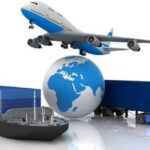




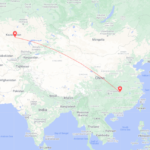


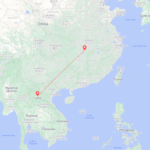
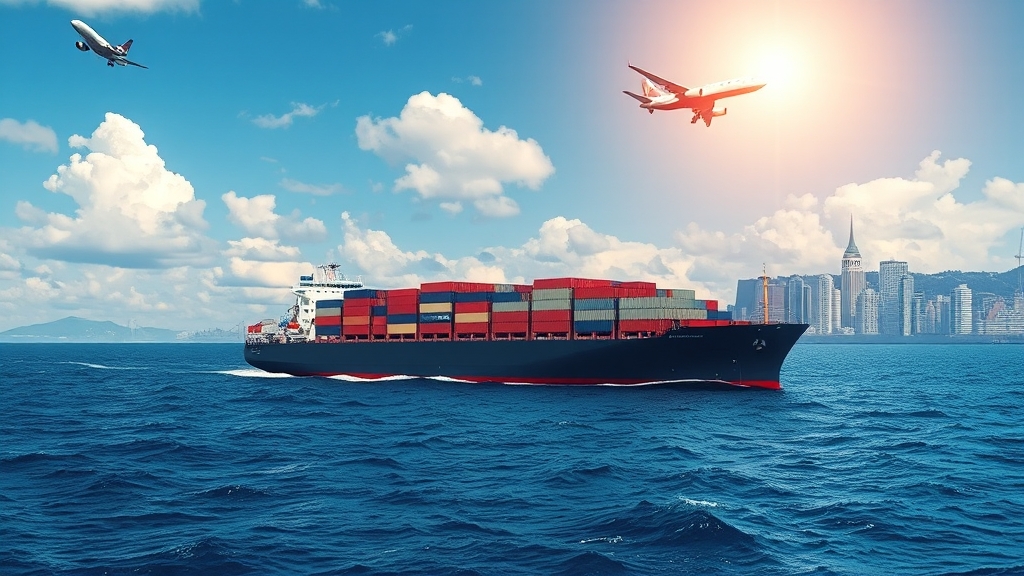

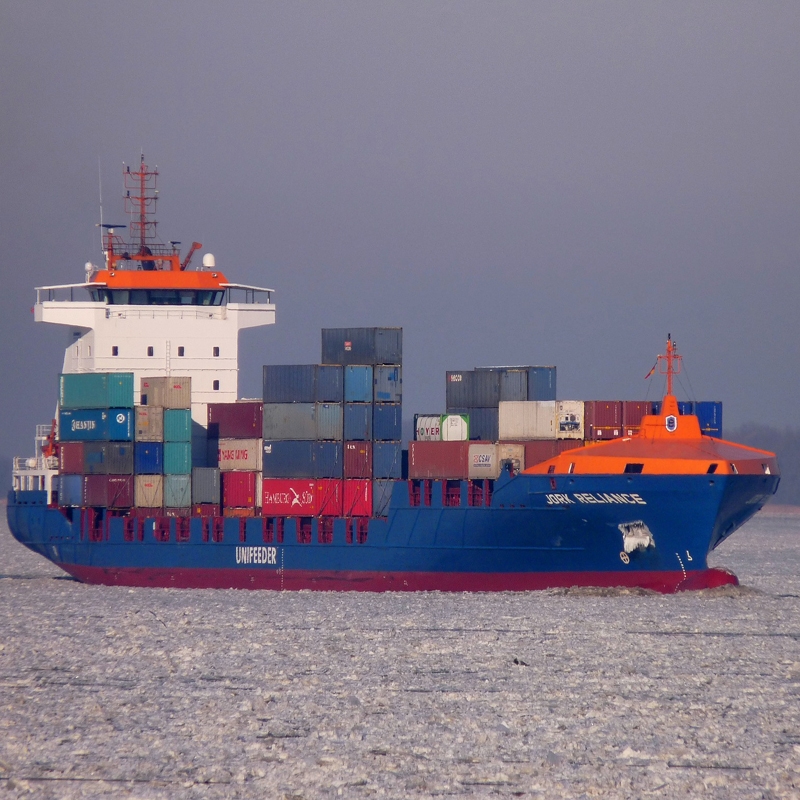
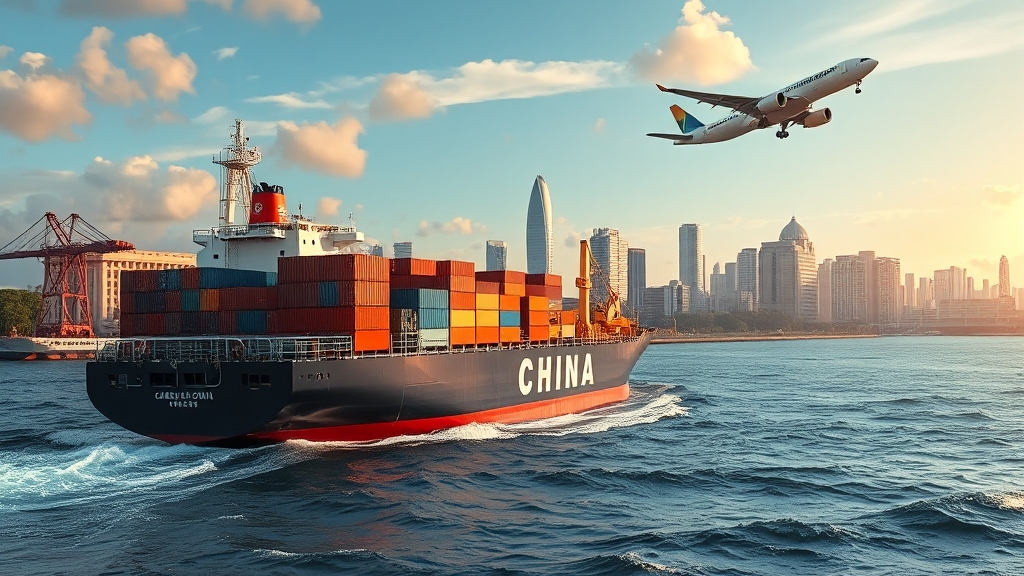
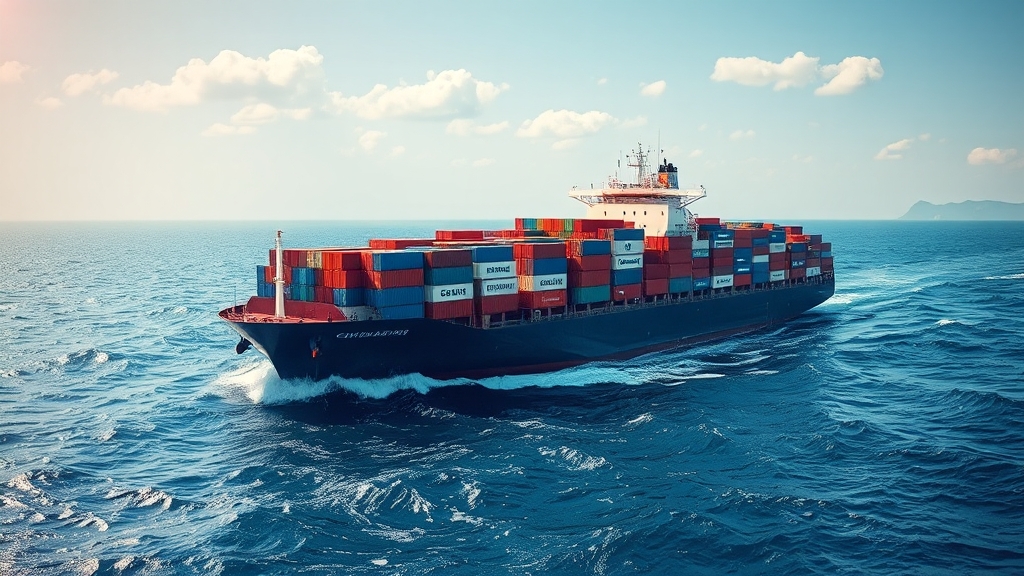





 Afrikaans
Afrikaans Shqip
Shqip አማርኛ
አማርኛ العربية
العربية Հայերեն
Հայերեն Azərbaycan dili
Azərbaycan dili Euskara
Euskara Беларуская мова
Беларуская мова বাংলা
বাংলা Bosanski
Bosanski Български
Български Català
Català Cebuano
Cebuano Chichewa
Chichewa 简体中文
简体中文 繁體中文
繁體中文 Corsu
Corsu Hrvatski
Hrvatski Čeština
Čeština Dansk
Dansk Nederlands
Nederlands English
English Esperanto
Esperanto Eesti
Eesti Filipino
Filipino Suomi
Suomi Français
Français Galego
Galego ქართული
ქართული Deutsch
Deutsch Ελληνικά
Ελληνικά Kreyol ayisyen
Kreyol ayisyen Harshen Hausa
Harshen Hausa Ōlelo Hawaiʻi
Ōlelo Hawaiʻi עִבְרִית
עִבְרִית हिन्दी
हिन्दी Hmong
Hmong Magyar
Magyar Íslenska
Íslenska Igbo
Igbo Bahasa Indonesia
Bahasa Indonesia Gaeilge
Gaeilge Italiano
Italiano 日本語
日本語 Basa Jawa
Basa Jawa ಕನ್ನಡ
ಕನ್ನಡ Қазақ тілі
Қазақ тілі ភាសាខ្មែរ
ភាសាខ្មែរ 한국어
한국어 كوردی
كوردی Кыргызча
Кыргызча ພາສາລາວ
ພາສາລາວ Latin
Latin Latviešu valoda
Latviešu valoda Lietuvių kalba
Lietuvių kalba Lëtzebuergesch
Lëtzebuergesch Македонски јазик
Македонски јазик Malagasy
Malagasy Bahasa Melayu
Bahasa Melayu മലയാളം
മലയാളം Maltese
Maltese Te Reo Māori
Te Reo Māori मराठी
मराठी Монгол
Монгол ဗမာစာ
ဗမာစာ नेपाली
नेपाली Norsk bokmål
Norsk bokmål پښتو
پښتو فارسی
فارسی Polski
Polski Português
Português ਪੰਜਾਬੀ
ਪੰਜਾਬੀ Română
Română Русский
Русский Samoan
Samoan Gàidhlig
Gàidhlig Српски језик
Српски језик Sesotho
Sesotho Shona
Shona سنڌي
سنڌي සිංහල
සිංහල Slovenčina
Slovenčina Slovenščina
Slovenščina Afsoomaali
Afsoomaali Español
Español Basa Sunda
Basa Sunda Kiswahili
Kiswahili Svenska
Svenska Тоҷикӣ
Тоҷикӣ தமிழ்
தமிழ் తెలుగు
తెలుగు ไทย
ไทย Türkçe
Türkçe Українська
Українська اردو
اردو O‘zbekcha
O‘zbekcha Tiếng Việt
Tiếng Việt Cymraeg
Cymraeg יידיש
יידיש Yorùbá
Yorùbá Zulu
Zulu